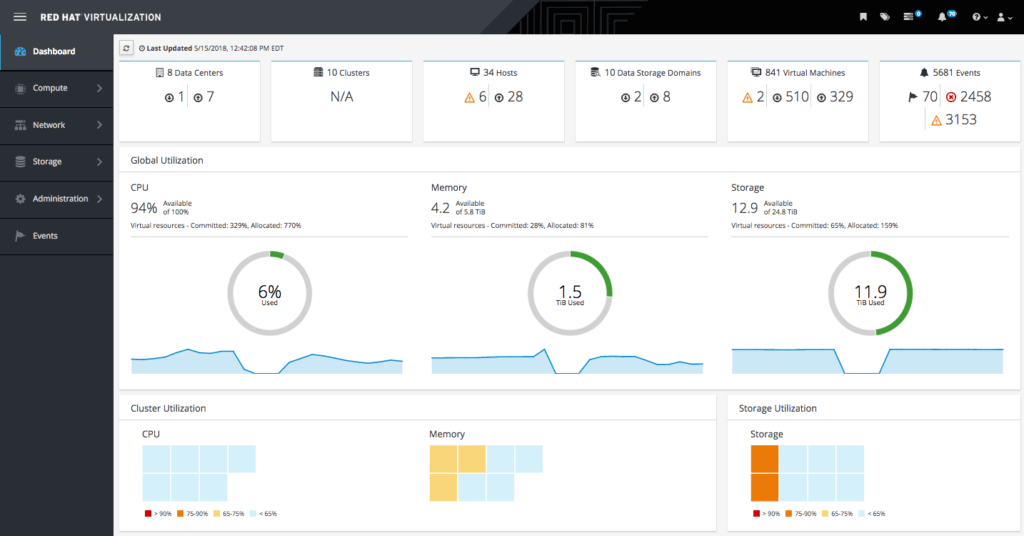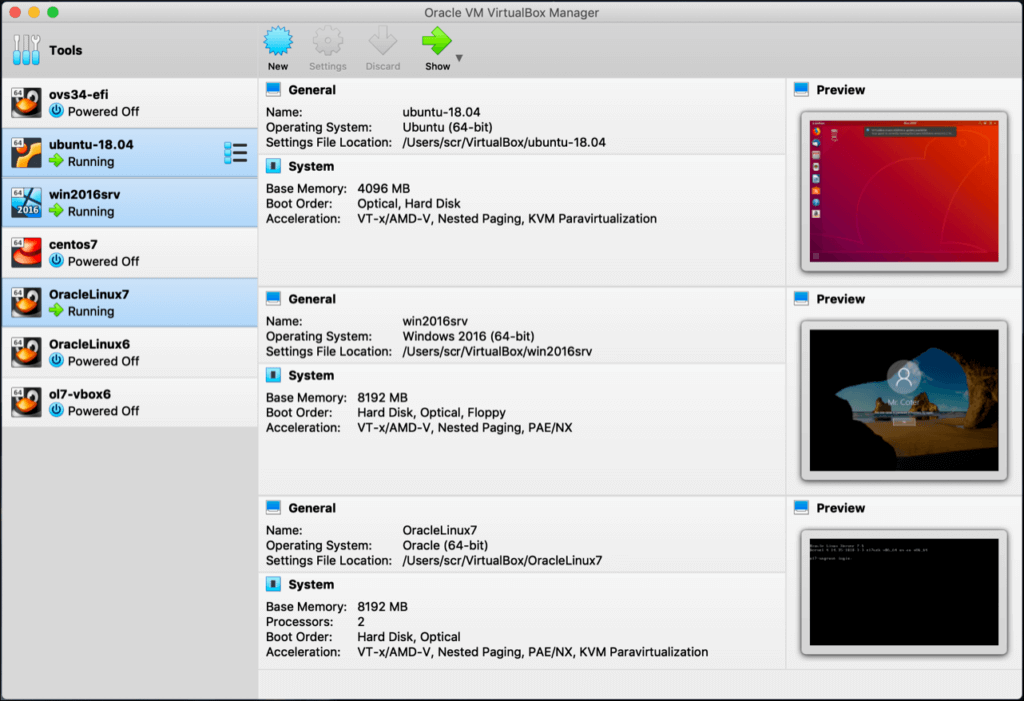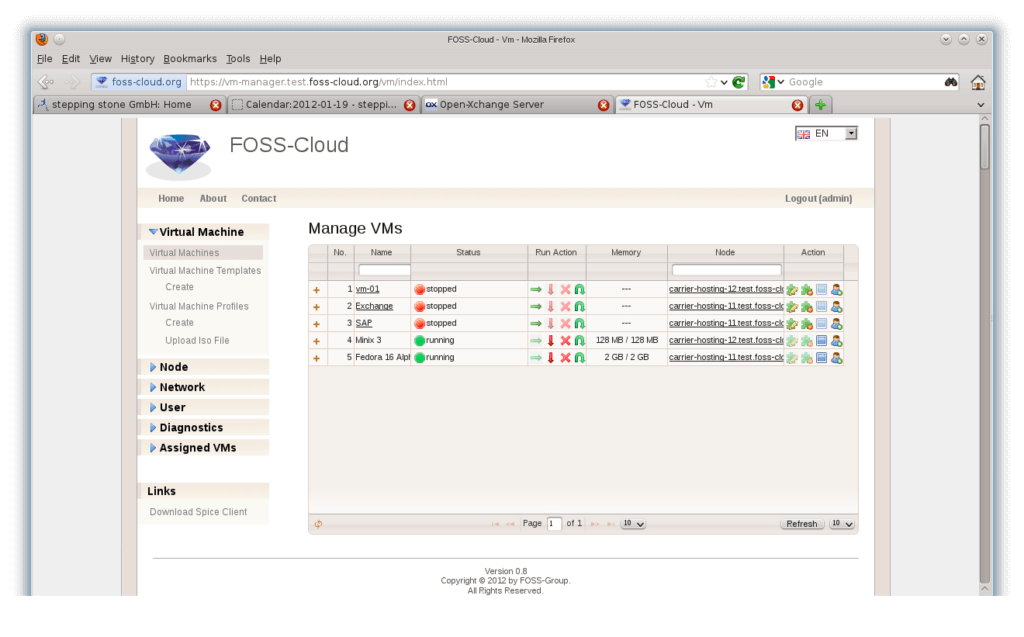Top 4 Free VDI Tools in 2021
With more and more businesses including a remote workforce, it’s becoming necessary for employees to be able to access their workstations from any device. Virtual Desktop Infrastructure (VDI) allows organizations to virtualize workspaces, and allow off-premise access. VDI also allows businesses to not have to worry less about specific hardware for employees. Regardless of a user’s host OS, VDI software allows access to Windows, Mac OS, and Linux distributions. The best VDI software offers high reliability, speed, and low network load.
There are many VDI tools businesses can choose from. From Mac-specific options like Parallels to VMWare’s suite of virtualization tools. These options can get pricey for a business looking for simple virtualization features, or access to a Windows desktop on an Apple device.
For businesses seeking a more affordable option, there are a variety of free and open-source VDI platforms. Understanding the ideal use cases for VDI tools, as well as their standout features and pricing options is essential when making a purchasing decision.
Red Hat Virtualization – High Performance and Scalability
Red Hat Virtualization is an open-source VDI tool. The solution also has a paid offering that includes support and hands-on implementation. For businesses with a skilled IT team, however, Red Hat is a great choice for a free tool. In summary, you will need a tech-savvy team to take advantage of this software without paying.

Red Hat Virtualization is a highly scalable and performative VDI tool that supports a variety of guest operating systems. It’s a good choice for businesses that are planning on growing or who’s VDI needs vary from day to day. It handles heavy workloads well and can manage a large amount of virtual machines and resources. The management features of Red Hat Virtualization allow for provisioning and OS and software updates.
While Red Hat Virtualization is a strong choice for VDI, its biggest limitation compared to other options on this list is versatility. Other tools support multiple virtualization functions, or are part of wider virtualization suites. Red Hat Virtualization is more limited. If you are looking for a single tool that can cover a wide variety of virtualization needs beyond VDI, Red Hat may not be the way to go.
Red Hat is an ideal tool for businesses that are looking for a specialized VDI solution. Red Hat offers high performance and easy management even for large amounts of machines. This also makes this softwarea viable choice for larger businesses.
Oracle VM VirtualBox – Best for Versatility
Oracle VM Virtualbox is a complete virtualization tool that can be used for tasks beyond just VDI. It is a good choice for businesses that want a single tool for things like server virtualization and VDI. The tool is also highly scalable, so it’s good for businesses that are planning on growing, or who’s VDI needs vary from day to day. VirtualBox also offers surprisingly high performance considering how versatile it is.

The software has a few limitations. VirtualBox is versatile, but it’s less performative than some specialized tools. If you are looking for high performance server virtualization and VDI, you may want to consider using two separate tools.
VirtualBox is an ideal tool for businesses that want a single tool that can handle multiple virtualization tasks at once. Performance can take a hit compared to specialized tools. For high demand workloads, or use cases where speed is essential, other tools may be more appropriate. Virtualbox can also be used as an affordable VDI tool to supplement specialized tools. In summary, this is the handy-man, jack-of-all trades, rather than a specialist.
VirtualBox is also a popular tool with developers. Whether developers are building apps for web browser, or business applications, VirtualBox can create the perfect hosted virtual desktop environment for any task.
VMWare Horizon – Best Integration
VMWare Horizon is a free VDI tool that integrates with VMWare’s suite of virtualization products. While VMWare’s larger suite is designed with enterprises in mind, VMWare Horizon can be used as a standalone tool for organizations of any size.

One advantage of VMWare Horizon is that as businesses grow, they can expand into other VMWare tools. Expanding in this way will ensure there are no integration problems, and that staff can quickly get the hang of new, but familiar interfaces. Since the VMWare suite is built with enterprises in mind, VMWare Horizon will grow with you no matter how large your organization gets. Other VMWare tools are not free, however.
VMWare Horizon is less exciting if you either already have other virtualization tools, or aren’t interested in other VMWare tools. It’s still a serviceable VDI tool, but if you aren’t taking advantage of its integrations, then another choice on this list may suit you better.
Foss-Cloud – Best for Ease of Use
Foss-Cloud is a VDI tool that’s extremely easy to implement and use with next to no oversight from IT. It’s great for businesses that want to reduce complexities by having users self-serve their remote desktops. Where many VDI software can fail is in having exclusionary levels of complexity. Foss-Cloud provides an option to those with less IT knowledge in their organizations.

The biggest advantage of Foss-Cloud is usability. Anyone that has used virtualization software can manage their desktop setup and accessing it from anywhere. Even new users won’t have much trouble with the program. Of all the tools on this list, Foss-Cloud offers the best user experience. The software also performs well at any scale.
The main downside of Foss-Cloud is that its centralized management features are lacking. This can make Foss-Cloud a poor choice for businesses with many users if they want to manage machines from a single administration tool.
Foss-Cloud is ideal for small businesses, or as a supplementary VDI tool. Larger businesses can make use of Foss-Cloud as a self-serve tool for developers that are familiar with virtualization.
Another area this could work well is in departments that have less tech-savvy employees. This is particularly true with employees working remote who have not historically done so. Foss-cloud is a fantastic way to allow these team members to keep up their productivity.
Not Sure Which is Right For You?
If you still aren’t sure which tool is right for your organization, consider checking out user reviews of VDI tools on TrustRadius. All reviews on Trustradius are from real users who share their thoughts on software based on their experience and use case.
If you are just starting to have more remote workers, VDI is an essential tool. If you are curious about the details about how VDI works, check out the introductory video below:
Also consider reading our guide on how to manage a team in a remote environment.
Was this helpful?
